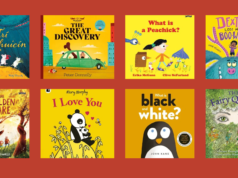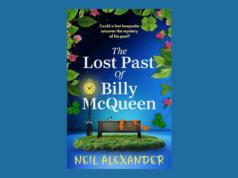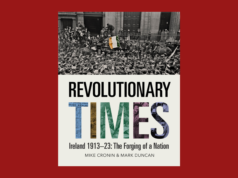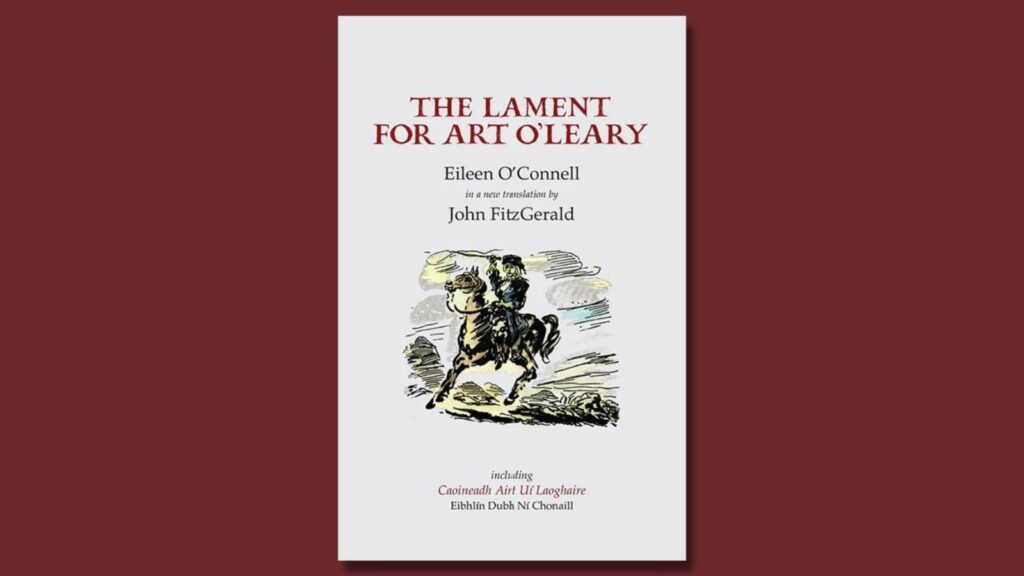
Caoineadh Airt Uí Laoghaire / The Lament for Art O’Leary|Gallery Press|trans. John FitzGerald
High fidelity? David Butler discusses soundscape, rhythm, and technique in John FitzGerald’s new translation of Caoineadh Airt Uí Laoghaire
by David Butler
On May 4th 1773, consequent upon a dispute over the compulsory purchase of his horse, a Catholic dandy who had served in the Hungarian Hussars was murdered in an ambush at the behest of his rival, a Protestant magistrate.
There was nothing particularly noteworthy about the sectarian killing in a century that never lacked for sectarian killings. Nothing, that is, except that it gave rise to a heartfelt keen, or lament, that has been characterised by Peter Levi, Professor of Poetry at Oxford University, as ‘the greatest poem written in these islands in the whole eighteenth century.’
Why then, it might reasonably be asked, beyond this year being the 250th anniversary of the killing and keening of Art O’Leary, is another translation called for?
Eibhlín Dhubh ní Chonaill’s powerful outcry for her murdered husband will be familiar to generations of Irish readers from their Leaving Certificate, not least through the many extant translations by such prominent figures as Frank O’Connor, Thomas Kinsella, Eilís Dillon, Angela Bourke, John Montague, Paul Muldoon, Vona Groarke and, most recently, via Doireann Ní Ghríofa’s outstanding meditation on the ‘lost’ figure of Eibhlín Dhubh, A Ghost in the Throat (Tramp Press, 2020), which includes Ní Ghríofa’s own translation of the lament.
Why then, it might reasonably be asked, beyond this year being the 250th anniversary of the killing and keening of Art O’Leary, is another translation called for?
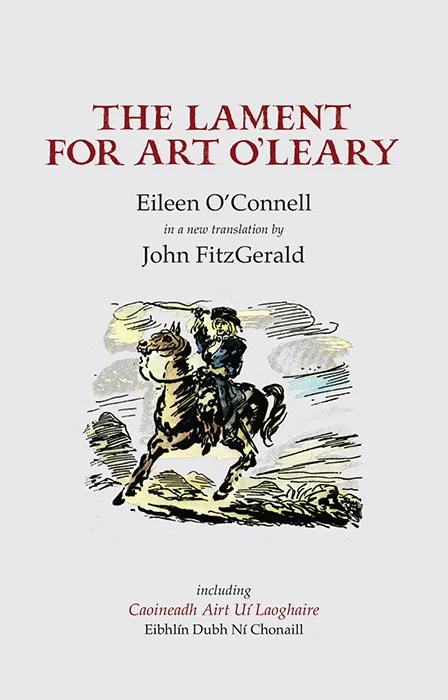
Fidelity
To be fair to FitzGerald, he broaches that precise question in his informative Introduction, along with the familiar chestnut of authorship, collaboration and the oral tradition. Every translation is – must be – inexact, since no two languages coincide in terms of lexis, soundscape, syntax.
In a translation (as opposed to a ‘version’ which, as with ‘variations on a theme’ in classical music, flaunts the interpreter’s style), what one aspires to is an approximation which conveys as much of what is deemed essential in the original into the target language.
How one weighs and evaluates these aspects will determine what one means by fidelity to the original – which aspects are desirable but flexible, which indispensable.
But what one means by this will depend on the translator’s evaluation of what precisely is essential in the original. How important is rhyme, say, or rhythm, or idiom, or soundscape, or register, or double-meaning, or connotation?
How one weighs and evaluates these aspects will determine what one means by fidelity to the original – which aspects are desirable but flexible, which indispensable. Vladimir Nabokov goes so far as to say that a faithful translation should always read like a translation, and never as though it had been composed in the target language.
Rhythmic currency
In his Introduction, FitzGerald sets out his stall in terms of ‘a desire to transfer the grief at the heart of the Caoineadh through the three-stressed line and to use this rhythmic currency as the basis of my approach.’
He goes on to explain ‘this patterning of sound by repetition, assonance and emphasis is the central forcefield of the Caoineadh, working in the same way as the ritualised nature of church liturgy in generating an overwhelming state of devotion’.
The overriding aim is ‘to create a version of the Caoineadh in English which preserves the original’s sonic and rhetorical qualities and delivers the almost physical intensity of love and loss.’ ‘I have not,’ he declares, ‘found this performative charge to have been as central to any other English translation of the poem that I am aware of.’
Technique
In terms of technique, the ritualistic repetitions and incantatory quality of the Caoineadh are certainly what strike one in encountering the original. The second ‘stanza’ runs:
Is domhsa nárbh aithreach:
chuiris parlús á ghealadh dhom,
rúmanna á mbreacadh dhom,
bácús á dheargadh dhom,
brící á gceapadh dhom,
rósta ar bhearaibh dom,
mairt á leagadh dhom;
codladh i gclúmh lachan dom
go dtíodh an t-eadartha
nó thairis dá dtaitneadh liom.
In his rendition, FitzGerald retains a dimetric line based on two trisyllabic dactyls (long, short, short) – the rhythm on which the jig typically runs – but shortening the second foot to a trochee (long, short) by dropping the ‘d(h)om’ in the English, subsuming the idea of ‘for me’ in the simple possessive ‘my’:
I had no regrets:
you painted our mansion
and gilded my chamber,
kindled my ovens
and baked me my bread;
you butchered my beasts
and roasted my meat,
and I dozed in duck down
all day until dinner
or beyond if I wanted.
One effect of this adherence to rhythmic patterning is to foreground the performative nature of the lament. Just as there would be a number of keeners at a wake, so several voices are woven by Eibhlín Dhubh, picking up or counterpointing phrases from what went before. Art’s father, for instance, invokes a curse on the malefactor which is later taken up and elaborated by the widow, while between Eibhlín Dhubh and Art’s sister there runs a sort of graveside rivalry not unlike that between Hamlet and Laertes at Ophelia’s funeral.
Soundscapes
To return to matters acoustic, the soundscapes of the Irish and English languages are very distinct. Phonemically, with the prevalence the séimhiú and urú causing (in Dinneen’s Foclóir) the bathadh or ‘drowning’ of (principally) unvoiced consonants, the Irish tends to favour the voiced over the unvoiced giving it a softer timbre, while as every schoolchild knows, her vowels are governed by the euphony of leathan le leathan is caol le caol.
Declan Kiberd in Irish Classics compares the effect to the hypnotic use of assonance by Sylvia Plath
FitzGerald writes of the ‘patterning of sound by repetition, assonance and emphasis’, and each stanza in the Caoineadh is indeed dominated by an emphatic vowel sound, as for instance the ‘ea’ of the second stressed syllable in the stanza quoted above.
Declan Kiberd in Irish Classics compares the effect to the hypnotic use of assonance by Sylvia Plath. The dominant vowel in stanza 28, placed in the mouth of Art’s sister, is ‘ú’:
Mo ghrá is mo rún tu!
’s is breá thíodh súd duit,
stoca chúig dhual duit,
buatais go glúin ort,
Caroilín cúinneach,
is fuip go lúfar
ar ghillín shúgach—
is mó ainnir mhodhúil mhúinte
bhíodh ag féachaint sa chúl ort.
In FitzGerald’s rendition :
My love and my treasure!
They suited you well,
your stocking, five-ply,
your boots to the knee,
your three-cornered hat,
your whip in the air,
on a lively young mare,
and the young ladies eyeing you
as you rode by.
Yes, there is a solid rhythm in this, as in the second stanza quoted above, but I’m not hearing, here or elsewhere, a prominent phonemic patterning based upon assonance to mirror that running through the original and giving it its acoustic fibre.
This in itself wouldn’t be a problem if it weren’t for FitzGerald’s declared aim to ‘create a version of the Caoineadh in English which preserves the original’s sonic and rhetorical qualities’ so as to give the new translation a ‘performative charge [that has not] been as central to any other English translation of the poem that I am aware of.’
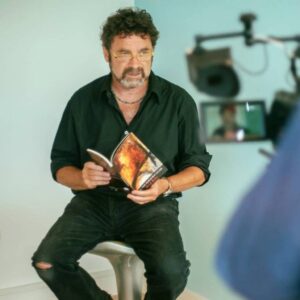
David Butler is a novelist, short story writer, playwright and poet. He is the author of City of Dis (New Island), All the Barbaric Glass (Doire Press), and Liffey Sequence (Doire Press). His new short story collection Fugitive is out now with Arlen House.








